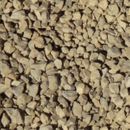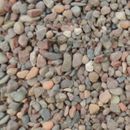River rock vs. limestone for radon mitigation system
I had my excavator order the 4″ of rock needed for the sub-slab radon mitigation system. I have only seen 1/2 -3/4″ river rock used for this so when I showed up to the jobsite yesterday, I was a little shocked to see 1/2-3/4″ limestone in my basement. It is like a class 5 mix but without the fines. It is pretty soft and dusty, and seems to lock into place unlike the river rock, which are my two main concerns. I want this space to stay open and easy for gasses to flow through and in my mind, the river rock would be the preferred aggregate for this task.
Is this okay? Is this less than ideal for my system? Do I ask him to switch it out? I understand I probably should have specified aggregate type but I have never seen anything but river rock used. I will do what is needed by not sure if this is something to fuss over or move on.
GBA Detail Library
A collection of one thousand construction details organized by climate and house part











Replies
Bobby,
The names for material sold by rock quarries vary from region to region. Moreover, the type of gravel and crushed stone sold varies widely, based on local geology.
Here in Vermont, the type of crushed stone sold for the purpose you are talking about is often called "crushed ledge," although some quarries just call it "crushed stone." It is further designated by maximum size -- e.g., "3/4 crushed ledge" or "1 inch crushed ledge."
I have no idea what types of stone are available in your area. But from the photos, I can't think of any reason why the crushed limestone wouldn't work. It looks similar to what I am used to.
The "river rock" shown in the other photo looks more like a decorative stone that would be used by a landscaper.